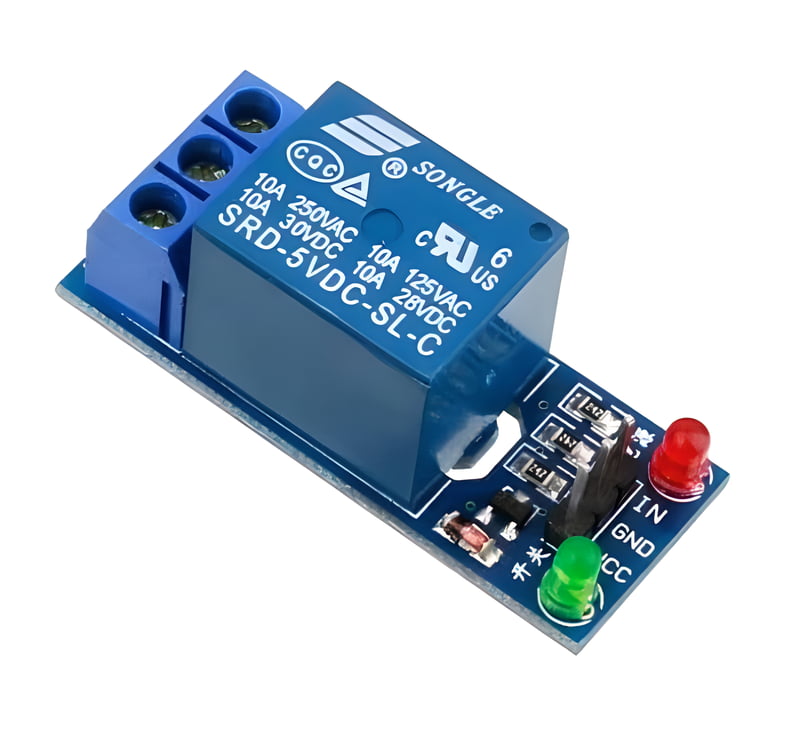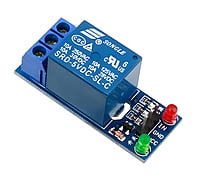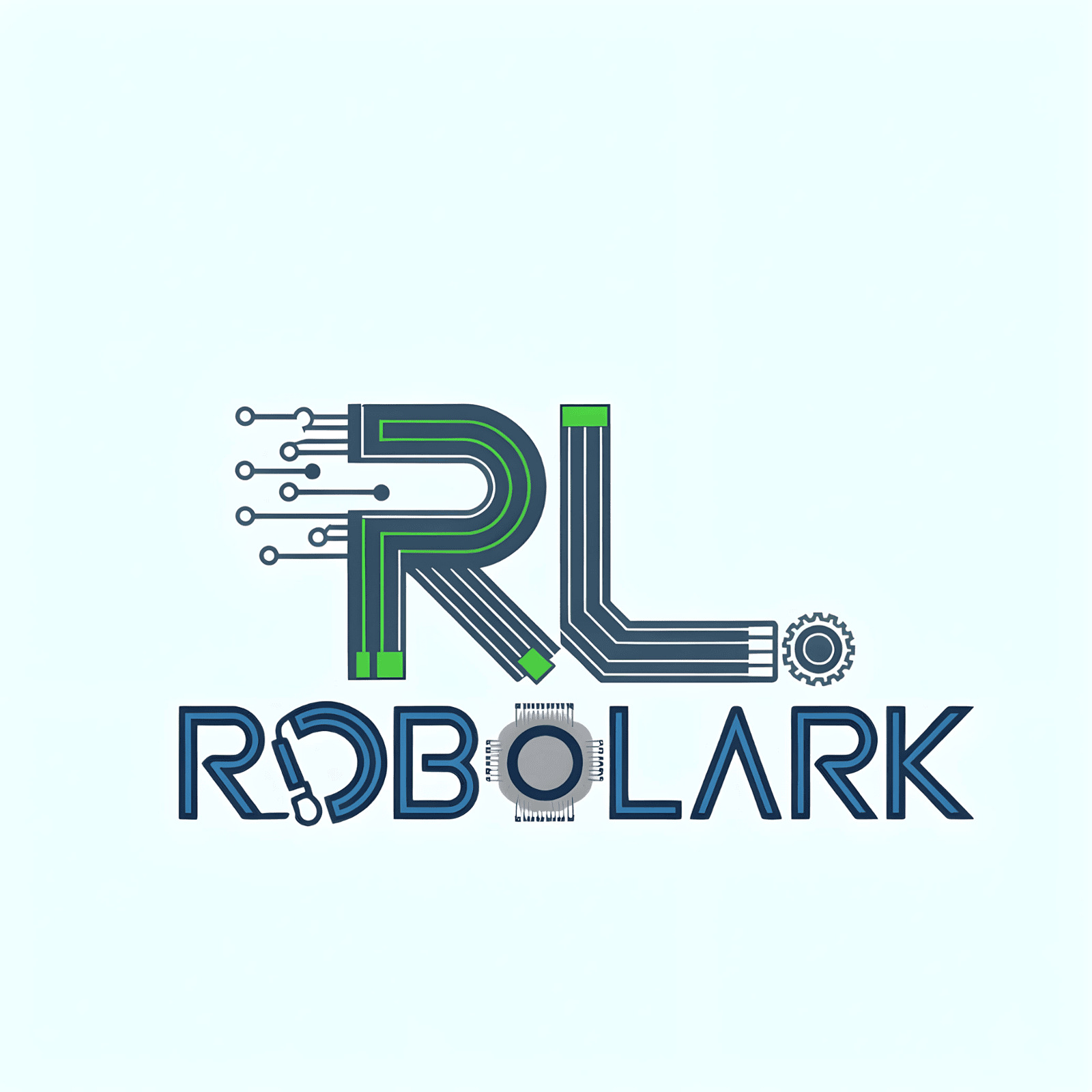



1 Channel Relay module - 12 Volt
Product Details
Key Features:-
Relay: The core component of the module is a relay, which is an electromechanical switch that can handle higher electrical currents and voltages than most electronic components. The relay typically has a set of contacts that can be in one of two states: normally open (NO) or normally closed (NC).
Coil Voltage: The 1-channel relay module is designed to operate with a 12-volt DC input voltage. When a 12V voltage is applied to the relay coil, it energizes the coil, causing the relay contacts to change state.
Input Signal: To control the relay, the module typically has a control input or signal pin that accepts a low-voltage signal (usually 3.3V or 5V) from a microcontroller, sensor, or other digital or analog source. Applying or removing the input signal toggles the relay.
Terminal Contacts: The relay module includes terminal contacts (screw terminals or pin headers) for connecting the high-power circuit you want to control. These terminals are used to connect the electrical device or load that the relay will switch on or off.
LED Indicator: Many relay modules include an LED indicator to provide visual feedback on the state of the relay. The LED may light up when the relay is energized (closed) and turn off when the relay is de-energized (open).


